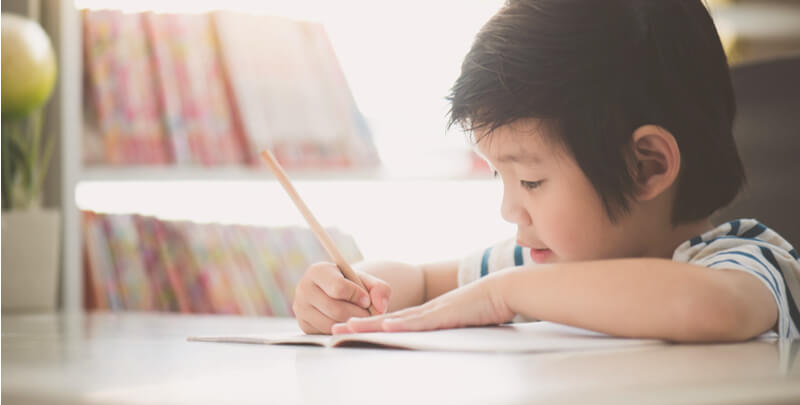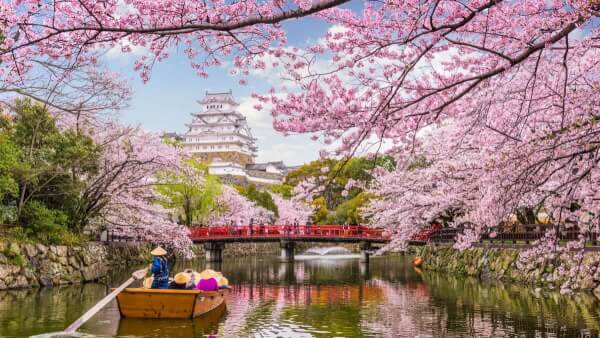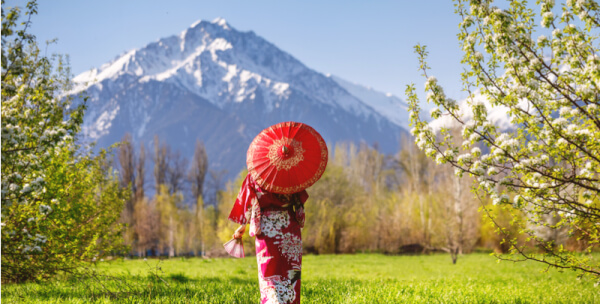Moving to Japan from Australia. The lowdown
With its rich cultural heritage, delicious cuisine and varied attractions, it’s no wonder Australians are flocking to Japan by the thousands.¹³ In the first...

When you think of Japan, you may immediately associate the Asian country with serious meritocracy. Known for achievement-based promotion, Japanese students and adults alike strive for excellence in work and academic achievement, both of which contribute towards general social acceptance.
As such, it's no surprise that Japan consistently ranks highly for academic achievement. In fact, U.S. News & World Report places the island nation at number 10 in the world for education (and number 5 in their "best countries" rankings).
So, how does this elite school system work? This guide details the educational structure of the system in place, as well as the costs, curriculum, and school types available in the country. If you're an expat moving to Japan with children, this is your essential guide to navigating the Japanese education system. We'll also cover how Wise can help you manage the costs of international education.
Education in Japan typically begins with pre-primary education, after which schooling becomes compulsory from ages 6 to 15. That being said, most students continue their education through upper secondary school (ages 15-18), and a significant portion go on to higher education.
| Level | Ages | Compulsory | Government Funded | Notes |
|---|---|---|---|---|
| Pre-Primary | 3-6 | No | No | Includes Kindergarten (academically focused) and Day Care (more play-based). Mostly private and fee-paying. |
| Primary (Elementary) | 6-12 | Yes | Yes | Grades 1-6. Generalist teachers for most subjects. |
| Lower Secondary | 12-15 | Yes | Yes | Grades 7-9. Specialist teachers for each subject. English is a required foreign language. |
| Upper Secondary | 15-18 | No | Yes See Below | Grades 10-12. More specialized curricula (business, technical, etc.). Often private and fee-paying, but public options are available. |
Note: Although Upper Secondary school is not compulsory, and most are Private, the Japanese government does provide tuition support for lower income families, effectively making public Upper Secondary tuition-free, and offering some support for private school tuition.
Pre-primary education in Japan is for children aged three to five and is divided into two main types:
The aim of pre-primary schools is to foster cognitive, social, and emotional development through interactive play and activities, ultimately preparing children for primary education.
Attendance at pre-primary school is not compulsory. Most pre-primary institutions are privately funded and charge tuition fees.
Primary education (also called Elementary School) is compulsory and begins at age six, continuing until age twelve. This covers grades one through six. Typically, students have the same teacher for most subjects, which include Japanese, mathematics, science, social studies, music, arts and crafts, physical education, and homemaking. In later primary grades (often grades 5 or 6), students may begin learning a foreign language, often English, with a separate teacher.
Both public and private primary schools are available. However, the difference in quality between public and private primary schools is generally less pronounced in Japan than in many other countries, as Japanese public schools are generally very well-regarded. Teachers in both public and private schools are highly trained.
The grading scale in primary school is typically percentage-based, with corresponding letter grades:
| Grade | Scale | Description |
|---|---|---|
| S | 90.00-100.00 | Exemplary (秀) |
| A+ | 90.00-100.00 | Exemplary (秀) |
| A | 80-89.99 | Very good (優) |
| B | 70.00-79.99 | Good (良) |
| C | 60.00-69.99 | Satisfactory (可) |
| F | 0.00-59.99 | Fail (不可) |
Lower secondary school covers grades seven through nine, for students aged twelve to fifteen. While not technically compulsory in the same way as Primary, de facto, almost all Japanese students (over 95%) attend lower secondary school.
As with primary school, both public and private options are available, but the vast majority of students attend public schools at this level. Students have different teachers for each subject. The curriculum typically includes:
Extracurricular activities, such as sports clubs and theater groups, become increasingly important during lower secondary school.
Upper secondary school is not compulsory, but again, a very high percentage of Japanese students (over 90%) choose to attend. It covers grades ten through twelve, for students aged fifteen to eighteen.
At this level, curricula become more specialized. Students may choose courses in areas like:
Schools are often structured by departments, and students are taught by specialist teachers in each subject area, moving between classrooms throughout the day.
Unlike the lower levels, most upper secondary schools are private, and parents are typically responsible for tuition fees. However, there are public options, and the government provides financial assistance to families with lower incomes to help cover tuition costs.
The Japanese academic year typically runs from April to March. While some courses may run for the entire year, it's more common for courses to be organized by semester or trimester.
Japanese students generally have three main vacation periods:
The typical school day starts around 8:30 AM and ends around 3:30 PM, though this can vary by school and district. Some schools may have slightly different schedules for older and younger students, but this is less common than in some Western countries where staggered schedules are used for busing.
While public schools in Japan are tuition-free for Japanese citizens and de facto free for lower income families, many expatriates choose to enroll their children in international schools, particularly during the initial adjustment period or if the children don't yet have a strong command of Japanese.
International school fees can be substantial. A rough estimate is around ¥2,000,000 JPY to ¥3,000,000 JPY per year, though this can vary significantly depending on the school and grade level. Some schools may offer discounts for siblings. While textbooks are often included in tuition, uniforms are usually an additional expense, potentially costing between ¥80,000 JPY and ¥100,000 JPY per set (including winter, summer, and sports uniforms).
For expat families in Japan, managing education costs can involve significant international money transfers. Traditional providers often come with high fees and unfavorable exchange rates. Wise offers a cost-effective solution:
By using Wise, you can potentially save a significant amount of money on international school fees and other education-related expenses in Japan.
Whether you choose public or private education in Japan, your child will likely receive a high-quality education. For more information, the Japanese Ministry of Education, Culture, Sports, Science, and Technology (MEXT) website provides a wealth of resources on school philosophy, policies, curriculum, and enrollment procedures.
*Please see terms of use and product availability for your region or visit Wise fees and pricing for the most up to date pricing and fee information.
This publication is provided for general information purposes and does not constitute legal, tax or other professional advice from Wise Payments Limited or its subsidiaries and its affiliates, and it is not intended as a substitute for obtaining advice from a financial advisor or any other professional.
We make no representations, warranties or guarantees, whether expressed or implied, that the content in the publication is accurate, complete or up to date.

With its rich cultural heritage, delicious cuisine and varied attractions, it’s no wonder Australians are flocking to Japan by the thousands.¹³ In the first...

Getting around Japan’s urban metropolises is notoriously easy thanks to one of the world’s best and most efficient public transportation systems. Outside of...

Moving to Japan is an incredibly exciting prospect. Between delicious cuisine, beautiful destinations in nature, some of the world’s most interesting and...

How come Japanese people have the world’s longest life expectancy? Well, it’s a range of factors actually, including their healthy diet, but the country’s...

Heading to Japan? It’s worth getting your head around the Japanese healthcare system first. Especially as visiting a doctor in Japan is pretty common: people...

Japan is a country that's proved fascinating for foreigners ever since opening up to the world over 150 years ago. With a unique culture, and burgeoning...